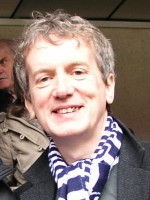Stanley Cortez est un Directeur de la Photographie et Cinématographie Américain né le 4 novembre 1908 à New York (Etats-Unis)
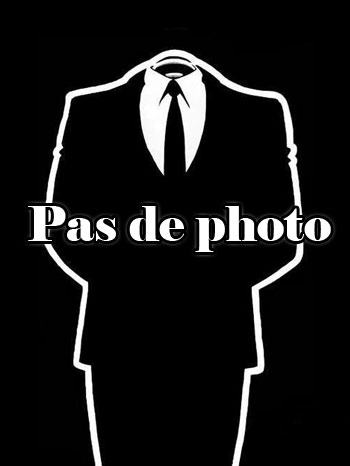
Stanley Cortez, A.S.C. (born Stanislaus Krantz; November 4, 1908 – December 23, 1997) was an American cinematographer. He worked on over seventy films, including Orson Welles' The Magnificent Ambersons (1942), Charles Laughton's The Night of the Hunter (1955), Nunnally Johnson's The Three Faces of Eve (1957), and Samuel Fuller's Shock Corridor (1963) and The Naked Kiss (1964).
Cortez's early films as cinematographer are not of the first rank, but they often had offbeat subjects that allowed him to experiment. (indeed, throughout his career, he displayed an ability to give otherwise mediocre works a certain interest by means of experimental techniques.) In The Forgotten Woman (1939) he did an extreme close-up of the actress's eyes to create a sense of seeing into her mind. Then Cortez had his big chance of working with Orson Welles on The Magnificent Ambersons (1942). Cortez saw the set for the film before being appointed first cameraman. His spatial sense told him that film among these sets would be a tremendous challenge. Welles intuited that that Cortez's mastery of studio space was exactly what this film–having a house as its main setting–demanded. Much of Cortez's work on the film was cut by the studio. During World War II, Cortez served in the United States Army Signal Corps.
In his later years, Cortez showed skill in filming psychological dramas. In a relatively minor work, Smash-Up, the Story of a Woman (1947), Cortez created the sense of drunkenness by doing subjective shots with flashing lights placed inside the camera, instead of using the banal distorted-lens shot. Charles Laughton gave Cortez another challenge – The Night of the Hunter. The extraordinary film demanded trial underwater shots and expressionistically lighted sets, and Cortez managed to endow the camera movements with a musical quality. In The Three Faces of Eve (1957), Cortez found his actress: Joanne Woodward would be to him what Greta Garbo was to William H. Daniels and Marlene Dietrich to Lee Garmes. Cortez's subtle modulations of lighting match Woodward's equally subtle changes of expression, and both together create the sense of Eve, a psychologically split personality, becoming someone else. The labyrinthine hallways and rooms of the studio set representing a mental hospital for Samuel Fuller's 1963 Shock Corridor is transformed by Cortez's camera into a symbol of incarceration and insanity.
Cortez died in 1997 of a heart attack, and is buried in Mount Sinai Memorial Park Cemetery.
 (1974)
(1974)
(Directeur de la Photographie) (1935)
(1935)
(Opérateur caméra)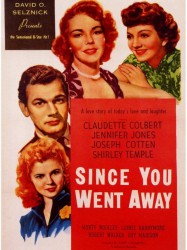 (1944)
(1944)
(Directeur de la Photographie)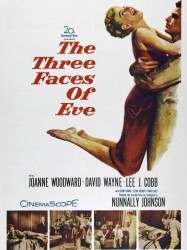 (1957)
(1957)
(Directeur de la Photographie)
Source : Wikidata
Stanley Cortez

- Infos
- Photos
- Meilleurs films
- Famille
- Personnages
- Récompenses
Nom de naissance Stanislaus Krantz
Nationalité Etats-Unis
Naissance 4 novembre 1908 à New York (Etats-Unis)
Mort 23 décembre 1997 (à 89 ans) à Hollywood (Etats-Unis)
Nationalité Etats-Unis
Naissance 4 novembre 1908 à New York (Etats-Unis)
Mort 23 décembre 1997 (à 89 ans) à Hollywood (Etats-Unis)
Stanley Cortez, A.S.C. (born Stanislaus Krantz; November 4, 1908 – December 23, 1997) was an American cinematographer. He worked on over seventy films, including Orson Welles' The Magnificent Ambersons (1942), Charles Laughton's The Night of the Hunter (1955), Nunnally Johnson's The Three Faces of Eve (1957), and Samuel Fuller's Shock Corridor (1963) and The Naked Kiss (1964).
Biographie
Cortez was born in New York City and attended New York University. He adopted his professional name, Cortez, to capitalize on the fame of his older brother, Jacob Krantz, who had been transformed into the film matinee idol Ricardo Cortez. He first worked as a designer of elegant sets for several portrait photographers' studios (including that of Edward Steichen), which may well have instilled in him his great talent: a strong feeling for space and an ability to move his camera through that space in such a way as to embody it in film's two-dimensional format. His first job in the film industry was for Pathé News, which later allowed him to give his films a newsreel-like touch when necessary. During the 1920s and the early 1930s, he worked his way up the usual Hollywood cameraman ladder: camera assistant, camera operator, and cinematographer (or first cameraman, a rank he attained in 1936). He managed to work for some of the great Hollywood cameramen, among them Karl Struss, Charles Rosher, and Arthur C. Miller. On the side, Cortez managed to do an experimental film, Scherzo (1932), that drew on the techniques of Slavko Vorkapić; critics have referred to this short as a "symphony of light."Cortez's early films as cinematographer are not of the first rank, but they often had offbeat subjects that allowed him to experiment. (indeed, throughout his career, he displayed an ability to give otherwise mediocre works a certain interest by means of experimental techniques.) In The Forgotten Woman (1939) he did an extreme close-up of the actress's eyes to create a sense of seeing into her mind. Then Cortez had his big chance of working with Orson Welles on The Magnificent Ambersons (1942). Cortez saw the set for the film before being appointed first cameraman. His spatial sense told him that film among these sets would be a tremendous challenge. Welles intuited that that Cortez's mastery of studio space was exactly what this film–having a house as its main setting–demanded. Much of Cortez's work on the film was cut by the studio. During World War II, Cortez served in the United States Army Signal Corps.
In his later years, Cortez showed skill in filming psychological dramas. In a relatively minor work, Smash-Up, the Story of a Woman (1947), Cortez created the sense of drunkenness by doing subjective shots with flashing lights placed inside the camera, instead of using the banal distorted-lens shot. Charles Laughton gave Cortez another challenge – The Night of the Hunter. The extraordinary film demanded trial underwater shots and expressionistically lighted sets, and Cortez managed to endow the camera movements with a musical quality. In The Three Faces of Eve (1957), Cortez found his actress: Joanne Woodward would be to him what Greta Garbo was to William H. Daniels and Marlene Dietrich to Lee Garmes. Cortez's subtle modulations of lighting match Woodward's equally subtle changes of expression, and both together create the sense of Eve, a psychologically split personality, becoming someone else. The labyrinthine hallways and rooms of the studio set representing a mental hospital for Samuel Fuller's 1963 Shock Corridor is transformed by Cortez's camera into a symbol of incarceration and insanity.
Cortez died in 1997 of a heart attack, and is buried in Mount Sinai Memorial Park Cemetery.
Ses meilleurs films
 (1974)
(1974)(Directeur de la Photographie)
 (1935)
(1935)(Opérateur caméra)
 (1944)
(1944)(Directeur de la Photographie)
 (1957)
(1957)(Directeur de la Photographie)
Le plus souvent avec
Filmographie de Stanley Cortez (48 films)
Caméraman

La Malédiction II (1978)
, 1h47Réalisé par Don Taylor, Mike Hodges
Origine Etats-Unis
Genres Drame, Thriller, Fantastique, Action, Horreur, Policier
Thèmes L'enfance, Religion, Diable
Acteurs William Holden, Lee Grant, Jonathan Scott-Taylor, Nicholas Pryor, Lew Ayres, Sylvia Sidney
Rôle Opérateur caméra
Note62%





Après le décès de ses parents, Damien Thorn est élevé par son oncle Richard. Il intègre une école militaire avec son cousin Marc, mais de nouvelles morts étranges éveillent les soupçons de son oncle. Richard Thorn découvrira les circonstances de la mort de son frère et la véritable identité de son neveu, Damien, qui n'est autre que l'Antéchrist. En même temps, Damien le découvrira, et apprendra à contrôler le pouvoir du mal afin d'accomplir sa destinée.
 , 2h12
, 2h12Réalisé par Claude Lelouch
Origine France
Genres Drame, Romance, Western
Acteurs James Caan, Geneviève Bujold, Francis Huster, Susan Tyrrell, Richard Farnsworth, Christopher Lloyd
Rôle Directeur de la Photographie
Note62%





Les hommes et les femmes ont trois points communs : la naissance, la mort et la possibilité de se rencontrer.

Chinatown (1974)
, 2h11Réalisé par Roman Polanski
Origine Etats-Unis
Genres Drame, Thriller, Noir, Policier
Thèmes La famille, Sexualité
Acteurs Jack Nicholson, Faye Dunaway, John Huston, Perry Lopez, John Hillerman, Diane Ladd
Rôle Directeur de la Photographie
Note80%





Dans les années 1930, Los Angeles est en pleine sécheresse. Evelyn Mulwray engage le détective privé Jake Gittes pour suivre son mari, ingénieur haut placé au département des eaux de la ville et soupçonné d'adultère. Hollis Mulwray s'oppose à la construction d'un barrage hydraulique, qui permettrait d'alimenter les cultures et les élevages en eau potable. Gittes finit par prendre Hollis en photo avec une autre femme. Un article racontant l'infidélité parait dans le journal, et Evelyn Mulwray vient se plaindre auprès de Gittes. Il s'avère que la personne qui l'avait engagé n'était pas la vraie Evelyn Mulwray.
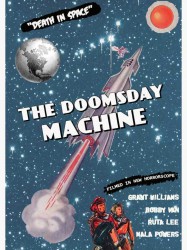
Doomsday Machine (1972)
, 1h23Origine Etats-Unis
Genres Science-fiction
Thèmes L'espace, Space opera, Sur Vénus
Acteurs Denny Miller, Ruta Lee, Grant Williams, James Craig, Mala Powers, Henry Wilcoxon
Rôle Directeur de la Photographie
Note26%





Des espions découvrent que les Chinois rouges ont construit une machine apocalyptique capable de détruire la surface de la Terre, et qu'ils prévoient de l'utiliser en quelques jours. Pendant ce temps, le projet Astra, une mission spatiale américaine habitée vers Vénus, est dans les dernières heures avant son lancement lorsqu'il est pris en charge par l'armée et que près de la moitié de son équipage entièrement masculin est remplacé par des femmes. La raison de cette décision devient évidente lorsque, peu après qu'Astra a quitté son orbite, la Terre est complètement détruite dans un cataclysme mondial ! La race humaine est-elle condamnée ? Quels dangers et quelles merveilles attendent l'équipage de l'Astra lors de son voyage vers Vénus ?
 , 1h13
, 1h13Réalisé par Ted Post
Origine Etats-Unis
Genres Thriller, Comédie
Thèmes Informatique
Acteurs Helen Hayes, Mildred Natwick, Vince Edwards, Myrna Loy, Sylvia Sidney, John Beradino
Rôle Directeur de la Photographie
Note63%





Residing in the Los Angeles County city of Pasadena, four middle class ladies in their late sixties (Helen Hayes, Myrna Loy, Mildred Natwick and Sylvia Sidney) habitually meet for lunch and exchange small talk with their waitress (Dodo Denney). During the meal they discuss an "amusing" project to create a fictitious profile of a young woman and submit it to a computer dating service. Several days later, they start receiving letters from potential suitors and derive additional amusement from reading them out loud. Meanwhile, after dark, in a car parked in front of her home on a quiet residential street, a young woman (Diane Shalet) becomes alarmed by the aggressive behavior of her date (Vince Edwards) whose attempts to force himself upon her cause her to scramble out of his car and, when he comes out and attempts to manhandle and restrain her, she tearfully runs into the house, as her mother (Margaret Wheeler) calls out through the window, "Ruthie". The man gets back in his car and drives away while his audible thoughts reveal that he has difficulty relating to women and the resulting resentment and rage he feels towards them. He tries to recall the name of another prospect for a relationship and settles on the fictitious "Rebecca" submitted to the "Scientific Associates" computer dating agency by the aged ladies.

Le Pont de Remagen (1969)
, 1h55Réalisé par John Guillermin
Origine Etats-Unis
Genres Drame, Guerre, Action, Historique
Thèmes Pont, Politique
Acteurs George Segal, Robert Vaughn, Ben Gazzara, Bradford Dillman, E. G. Marshall, Peter van Eyck
Rôle Directeur de la Photographie
Note66%





Le film raconte de manière assez libre les évènements autour de la prise, par l'armée américaine le 7 mars 1945, du pont de Remagen. Début mars 1945, les armées alliées progressent rapidement sur la rive occidentale du Rhin. Les ponts sur le Rhin ont été détruits un à un par les Allemands, il ne reste plus que celui de Remagen.

El Gringo (1968)
, 1h53Réalisé par Yakima Canutt, Silvio Narizzano
Origine Etats-Unis
Genres Romance, Western
Acteurs Terence Stamp, Joanna Pettet, Karl Malden, Stathis Giallelis, Ricardo Montalbán, James Westerfield
Rôle Directeur de la Photographie
Note60%





Tous les mexicains ne se sont pas remis de l'annexion d'une partie du Mexique par les États-Unis. L'indépendance des nouveaux États continue de provoquer la fureur de bandes devenues marginales. La bande d'Ortega commet des pillages. Les trois fils d'Ortéga font partie d'une expédition menée contre un village proche de la frontière mexicaine. Avec eux, Azul (ainsi nommé du fait de ses yeux bleu), un jeune homme blond recueilli jadis et élevé par Ortega. Azul sauve d'une tentative de viol la fille du docteur en tuant l'un des fils d'Otéga. Un autre des fils Ortéga sera tué durant leur fuite par les habitants, tandis que blessé et échappant à ses poursuivants, Azul revient se réfugier dans la maison du docteur. Ce dernier le sauve, et la jeune femme tombe amoureuse de cet homme étrange.

They Saved Hitler's Brain (1968)
, 1h31Réalisé par David Bradley
Origine Etats-Unis
Genres Science-fiction, Thriller, Aventure
Thèmes Politique
Acteurs Walter Stocker, Carlos Rivas, John Holland, Carlos Rivas, Marshall Reed, Nestor Paiva
Rôle Directeur de la Photographie
Note24%





World War II is over, and Nazi officials remove Adolf Hitler's living head and hide it in the fictional South American country of Mandoras, so that they can resurrect the Third Reich for the future. It fast forwards into the 1960s, and the surviving officials kidnap a scientist in an attempt to keep Hitler alive. Various intelligence agencies, aware of the evil plot, recruit secret agents to bust the Nazi officials.
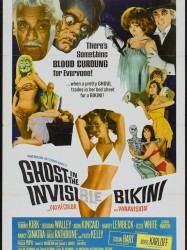 , 1h22
, 1h22Réalisé par Don Weis
Origine Etats-Unis
Genres Comédie, Comédie horrifique, Comédie musicale, Fantasy, Horreur, Musical
Thèmes Fantômes
Acteurs Deborah Walley, Tommy Kirk, Basil Rathbone, Aron Kincaid, Boris Karloff, Jesse White
Rôle Directeur de la Photographie
Note46%





Hiram Stokely (Boris Karloff), propriétaire d'une villa, vient de mourir. Son fantôme, aidé de celui de Cecily, sa petite amie, doit faire rapidement une bonne action s'il veut rejoindre le Paradis. Il va aider ses jeunes héritiers légitimes à hériter de la villa face à son avocat, Reginald Ripper, qui veut les spolier. Les jeunes invitent leurs amis dans une partie organisée autour de la piscine de la villa. L'avocat essaye de les en faire fuir en les terrorisant avec l'aide de ses comparses.
 , 1h27
, 1h27Réalisé par Jon Hall, Michael A. Hoey
Origine Etats-Unis
Genres Science-fiction, Horreur
Acteurs Mamie Van Doren, Anthony Eisley, Biff Elliot, Billy Gray, Bobby Van, Pamela Mason
Rôle Directeur de la Photographie
Note36%





Lors d'une mission d'exploration en Antarctique, une équipe de scientifiques découvrent d'étranges plantes, véritables fossiles vivants. Plusieurs spécimens de la faune et de cette étrange flore sont chargés à bord de l'avion qui doit les ramener aux USA pour y être étudiés. Mais avant d'arriver à destination l'avion doit faire escale à Gow Island, petite station météorologique pour faire le plein. Lorsque celui-ci se pose en catastrophe sur le tarmac, il ne reste plus que le pilote en état de choc, et la cargaison dans la soute. Le lieutenant Charlie Brown qui vient de prendre le commandement de l'île va devoir résoudre ce mystère, mais il va aussi devoir faire face à un autre problème, les plantes ramenées sur l'île s'avèrent terriblement dangereuses, mortelles.

Police spéciale (1964)
, 1h30Réalisé par Samuel Fuller
Origine Etats-Unis
Genres Drame, Thriller, Policier
Thèmes Sexualité, Erotique, Prostitution
Acteurs Constance Towers, Anthony Eisley, Michael Dante, Virginia Grey, Patsy Kelly, Edy Williams
Rôle Directeur de la Photographie
Note71%





Après avoir fui son proxénète, Kelly, une prostituée, s'installe à Grantville où elle décroche un emploi d'infirmière à l'hôpital. Tout va bien pour la jeune femme, dont le désir de refaire sa vie est en train de prendre forme au-delà de toutes ses espérances. Lorsqu'elle tombe amoureuse du richissime Grant, c'est le bonheur absolu. Mais celui-ci est un ancien pédophile...

Shock Corridor (1963)
, 1h41Réalisé par Samuel Fuller
Origine Etats-Unis
Genres Drame, Thriller, Policier
Thèmes Film sur un écrivain, Journalisme, Maladie, Psychologie, Sexualité, Folie, Hôpital psychiatrique, Striptease
Acteurs Peter Breck, Constance Towers, Gene Evans, James Best, Philip Ahn, Hari Rhodes
Rôle Directeur de la Photographie
Note72%





Johnny Barett, journaliste ambitieux qui souhaite gagner le Prix Pulitzer, projette de s'immerger dans un asile psychiatrique pour démasquer l'auteur d'un meurtre qui s'y est déroulé. Préparé par un psychiatre, ancien spécialiste de la guerre psychologique, et avec la complicité réticente de sa compagne Cathy, stripteaseuse, qui se fait passer pour sa sœur victime de ses tendances incestueuses, il se fait arrêter puis interner tout en continuant à simuler des troubles mentaux.

Histoire d'un amour (1961)
, 1h47Réalisé par David Miller
Origine Etats-Unis
Genres Drame, Romance
Acteurs Susan Hayward, John Gavin, Vera Miles, Charles Drake, Virginia Grey, Natalie Schafer
Rôle Directeur de la Photographie
Note65%





Paul Saxon, riche héritier d'une chaîne de magasins, rencontre Rae Smith à son retour de guerre. Attendant un avion pour New York, ils passent une journée ensemble et tombent mutuellement amoureux. Rae rate l'avion, et découvre par la suite que Paul est marié. Rae décide de tenter sa chance à New York et trouve du travail auprès du fameux styliste Dalian. Elle rencontre Paul par hasard et ils se rendent compte qu'ils sont encore amoureux l'un de l'autre. Ne voulant pas devenir sa maîtresse cachée, Rae décide alors de fuir et de poursuivre sa carrière à Rome.

Histoire d'un amour (1961)
, 1h47Réalisé par David Miller
Genres Drame, Romance
Acteurs Susan Hayward, John Gavin, Vera Miles, Charles Drake, Virginia Grey, Reginald Gardiner
Rôle Directeur de la Photographie
Note65%





Paul Saxon, riche héritier d'une chaîne de magasins, rencontre Rae Smith à son retour de guerre. Attendant un avion pour New York, ils passent une journée ensemble et tombent mutuellement amoureux. Rae rate l'avion, et découvre par la suite que Paul est marié. Rae décide de tenter sa chance à New York et trouve du travail auprès du fameux styliste Dalian. Elle rencontre Paul par hasard et ils se rendent compte qu'ils sont encore amoureux l'un de l'autre. Ne voulant pas devenir sa maîtresse cachée, Rae décide alors de fuir et de poursuivre sa carrière à Rome.

Les Monstres De L'Ile En Feu (1960)
, 1h25Origine Etats-Unis
Genres Science-fiction, Fantasy, Aventure, Horreur
Thèmes Mise en scène d'un animal, Dinosaure, La mer, La préhistoire, Transport
Acteurs Paul Lukather
Rôle Directeur de la Photographie
Note49%





Dans les îles Caraïbes, une explosion sous-marine libère des créatures préhistoriques et un homme de Néandertal.
 Connexion
Connexion


